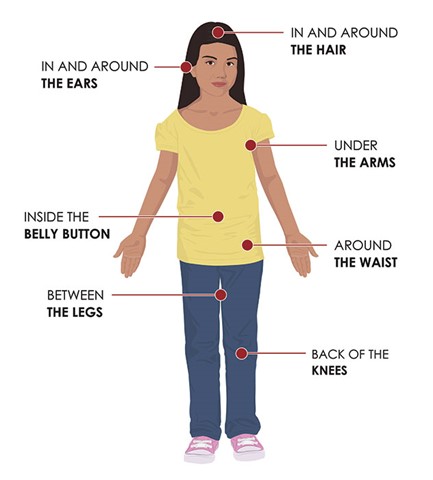African Tick Bite Fever
What is African tick bite fever?
African tick bite fever is a disease caused by a bacteria. You can get infected if you are bitten by an infected tick.
Symptoms usually appear within two weeks after a tick bite. The first sign is often a red sore that develops a dark crust, called an eschar. Eschars are found at the site of tick bite; multiple eschars may be present if you have multiple tick bites. Later symptoms may include fever, headache, muscle soreness, swollen lymph nodes, and a rash.
African tick bite fever is the most common disease travelers report getting from tick bites.
Who is at risk?
Travelers to sub-Saharan Africa, parts of the Caribbean, and Oceania (Australia, New Zealand, Melanesia, Micronesia, and Polynesia are at risk for African tick bite fever. You are at higher risk if your travel plans include outdoor activities such as camping, hiking, and game hunting in wooded, brushy, or grassy areas.
Ticks that are infected with bacteria that cause African tick bite fever are usually most active from November through April.
What can travelers do to prevent African tick bite fever?
There are no vaccines that prevent African tick bite fever. Travelers can protect themselves from infection by taking the following precautions:
Prevent Tick Bites
- Know where to expect ticks. Ticks live in grassy, brushy, or wooded areas, or even on animals. Spending time outside camping, gardening, or hunting could bring you in close contact with ticks. Many people get ticks in their own yard or neighborhood.
- Treat clothing and gear with products containing 0.5% permethrin. Permethrin can be used to treat boots, clothing and camping gear and remain protective through several washings. Alternatively, you can buy permethrin-treated clothing and gear.
- Use Environmental Protection Agency (EPA)-registered insect repellents containing DEET, picaridin, IR3535, Oil of Lemon Eucalyptus (OLE), para-menthane-diol (PMD), or 2-undecanone. EPA’s helpful search tool can help you find the product that best suits your needs. Always follow product instructions. Do not use products containing OLE or PMD on children under 3 years old.
- Avoid Contact with Ticks
- Avoid wooded and brushy areas with high grass and leaf litter.
- Walk in the center of trails.

Find and Remove Ticks
- Check your clothing for ticks. Ticks may be carried into the house on clothing. Any ticks that are found should be removed. When possible, tumble dry clothes in a dryer on high heat for 10 minutes to kill ticks on dry clothing after you come indoors. If the clothes are damp, additional time may be needed. If the clothes require washing first, hot water is recommended. Cold and medium temperature water will not kill ticks.
- Examine gear and pets. Ticks can ride on clothing and pets, then attach to a person later, so carefully examine pets, coats, and daypacks.
- Shower soon after being outdoors. Showering within two hours of coming indoors has been shown to reduce your risk of getting tick-borne diseases. Showering may help wash off unattached ticks and it is a good opportunity to do a tick check.
- Check your body for ticks. Conduct a full body check upon return from potentially tick-infested areas. Use a hand-held or full-length mirror to view all parts of your body. Check these parts of your body for ticks:
- Under the arms
- In and around the ears
- Inside belly button
- Back of the knees
- In and around the hair
- Between the legs
- Around the waist
- If you find a tick attached to your skin, simply remove the tick as soon as possible.
After Travel

If you traveled and feel sick, particularly if you have a fever, talk to a healthcare provider and tell them about your travel.
If you need medical care abroad, see Getting Health Care During Travel.